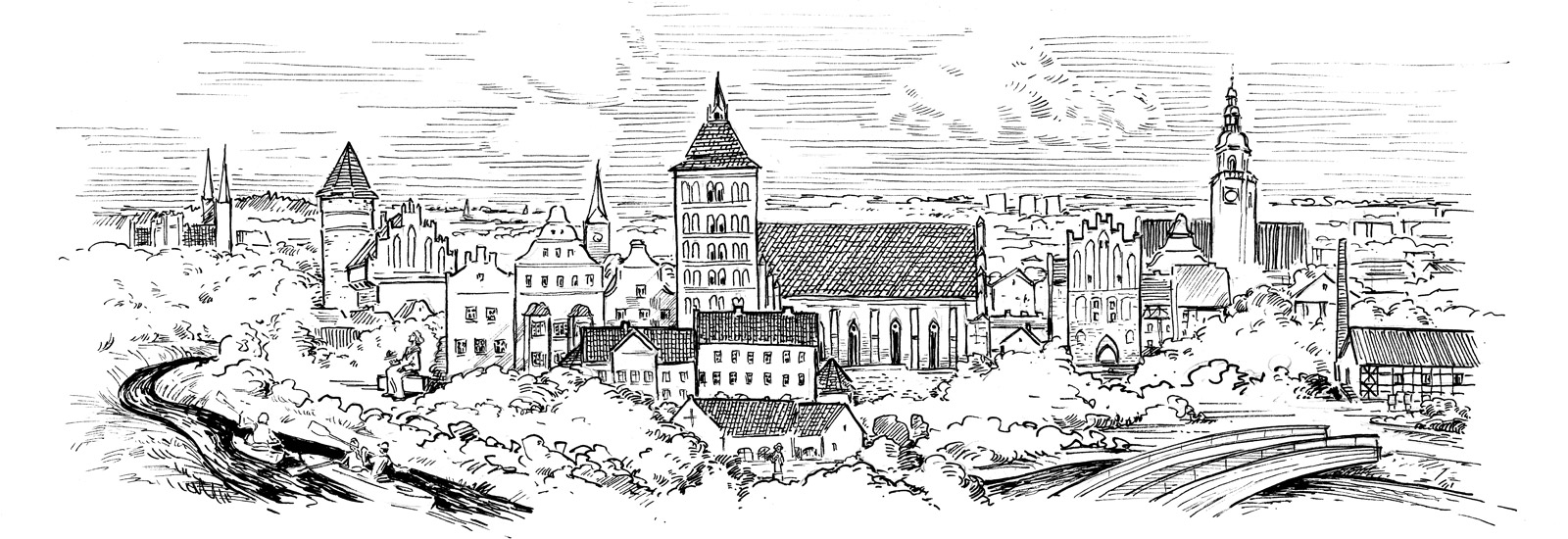Olsztyn
In Olsztyn, Nicolaus Copernicus visited the Warmia Chapter as early as in 1511. One of the many tasks assigned to him by the Chapter was to fulfil the duties of its administrator. In connection with this function, the scholar resided in the chapter castle in Olsztyn in the years 1516-19 and 1520-21. One of his duties was to settle villages depopulated by warfare with new settlers, which involved numerous field trips. The evidence of these activities is the manuscript entitled "Lokacje łanów opuszczonych" ("Locations of abandoned patches"), which contains records of visits to 43 villages in Warmia.
Commissioned by Warmian Bishop Fabian Luzjanski in 1517. Copernicus wrote a treatise on the reform of money, which two years later he developed into the treatise "The principles of minting coinage". In 1520, he prepared the castle and the town for defence against the expected attack of the Teutonic Knights. It brought the desired effect in January 1521, when the Teutonic Knights stormed the town walls near the Młyńska Gate. Over the next twenty years the astronomer visited the town on the Łyna many times.
Olsztyn was granted town rights in 1353. At that time the construction of the castle was completed. Other monuments with Gothic origins in the city are: the Basilica of St. James the Apostle, St. Lawrence Church, the Old Town Hall, the High Gate and fragments of city walls. Other preserved buildings include the Jerusalem Chapel from the sixteenth century, seven churches and chapels from the nineteenth and early twentieth centuries and the pre-burial house of the Jewish community (Bet Tahara).
The erection of the castle of the Warmia chapter began around 1348. The northern wing was completed in the second half of the 14th century. The southern one, with a round tower 30 m high, was added in the middle of the 15th century. Nowadays, the castle houses the Museum of Warmia and Mazury [http://muzeum.olsztyn.pl/], where you can see, among other things, an exhibition devoted to Copernicus and an absolute rarity - an astronomical table (705 cm by 140 cm) he made on the cloister wall and partially preserved. It is the world's only preserved astronomical instrument hand-made by Copernicus. A table showing the apparent motion of the Sun on the days of the spring and autumn equinoxes.
In the castle park there is a bust of Copernicus unveiled in 1916 by the Berlin sculptor Johannes Götz. In front of the entrance to the castle, a sculpture of Copernicus by Urszula Szmyt was placed in 2003. It has the form of a bench - you can sit on it together with the astronomer and pose for pictures.
As a tribute to the great scientist, on the 500th anniversary of his birth (1973) a planetarium was opened in Olsztyn [http://planetarium.olsztyn.pl/]. During the screenings viewers go on virtual spa-ce travel, learn the secrets of the starry sky, astronomical phenomena and mysteries of nature. Near-by, in the former water tower, an astronomical observatory was set up.
Visitors who are keen on active leisure are offered, among others, the summer attractions of the Ukiel Recreation and Sports Centre [http://www.osir.olsztyn.pl/pl/ukiel], located on the lake of the same name, and all year round - the offer of the Aquasfera Recreation and Sports Centre [http://www.osir.olsztyn.pl/pl/aquasfera]. You can go canoeing down the Łyna or any of the smaller rivers around Olsztyn.
